Wrist and Hand
Sprains and Strains
Muscle and tendon strain, and ligament sprain, are fairly common wrist injuries.
They may develop following trauma, such as a fall, especially ligament sprains. Strains more typically develop after a single episode of heavy lifting, pushing, or pulling.
Strains may also develop more slowly, due to overuse, or repeated use. The tendons that attach to the back of the thumb are especially vulnerable to this. The tendons that extend, or “cock” the wrist, are also vulnerable to repetitive use or overuse.
Physiotherapy is often used for hand and wrist strains or sprains. It may involve splinting, stretching or strengthening the affected area.
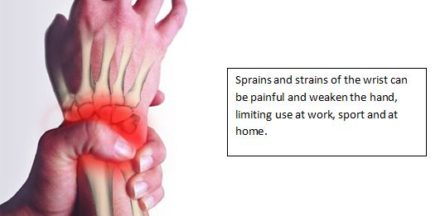
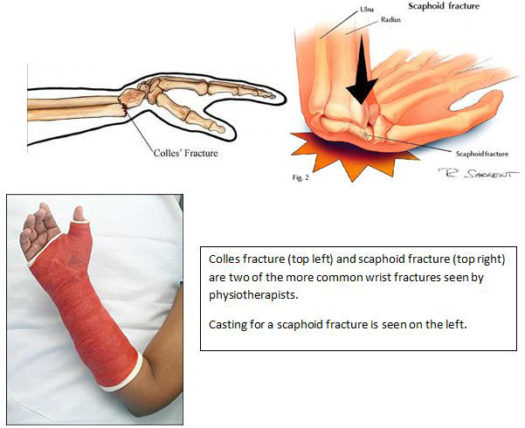
Wrist Fractures
The wrist and hand probably have the highest incidence of fractured, or broken bones in the body.
When we fall, we use our hands to absorb the impact. This places a great strain on the bones, resulting in fracture.
The elderly, post-menopausal women and young children are most at risk from hand and wrist fractures.
Physiotherapists may be asked by the doctor to immobilise the fracture in a cast or splint.
The wrist and hand are often stiff or weak after fracture, especially if they have been in a cast for over six weeks. Physiotherapy is helpful at mobilising and strengthening the hand and wrist after cast removal.
Dislocations of the Wrist and Hand
When the normal alignment and stability of the bones at a joint is lost, it is said to be dislocated.
Dislocations cause damage to the cartilage, ligaments and other soft tissue supporting the joint. This may cause swelling, pain, stiffness and weakness of the wrist and fingers.
Dislocations of the wrist are relatively uncommon, and usually follows major trauma. They often require surgery and immobilisation in a cast.
Finger dislocations are more common, especially in contact sports such as rugby league and rugby union. They are also seen in high speed ball sports such as netball and basketball.
Physiotherapists may be requested to provide casts or splints for dislocated wrists and fingers. They may also treat stiffness and weakness that follow dislocations.
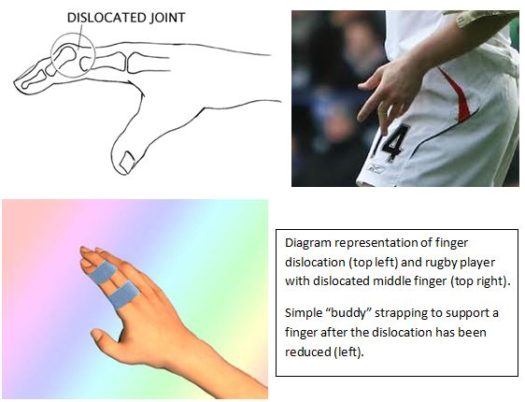
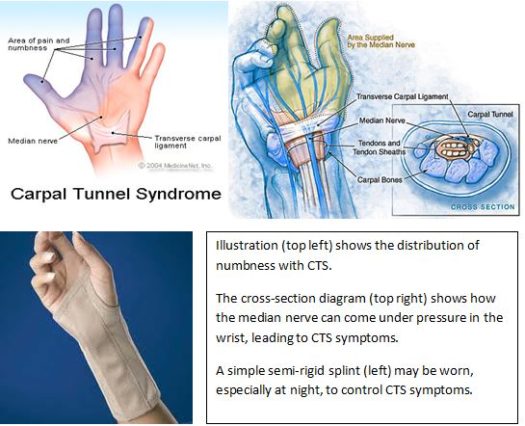
Carpal Tunnel Syndrome (CTS)
Entrapment or compression of the median nerve, on the palm side of the wrist, may cause pins and needles or numbness in the hand. This is carpal tunnel syndrome.
In particular, the thumb, index, middle and part of the ring finger are affected. These symptoms are often felt when trying to sleep, or with prolonged use of the hand, such as writing or typing.
CTS is also associated with repetitive use of the hand, including gripping, lifting, packing, or with data entry. CTS may also occur during pregnancy, due to increased fluid retention.
Physiotherapy can help with CTS through splinting, muscle and joint mobilisation, and exercise.
De Quervain’s Tenosynovitis
De Quervain’s tenosynovitis is another relatively common, painful condition of the wrist. It is an inflammation of the tendons at the base of the thumb. These tendons can be seen clearly if you lift the thumb away from the palm (“thumbs up” sign).
There may be swelling of the tendons and sometimes clicking as the thumb is moved.
De Quervain’s tenosynovitis is usually caused by repetitive lifting tasks. It is more common in women.
Physiotherapy can help with splinting, gentle stretching and other pain-relieving modalities.
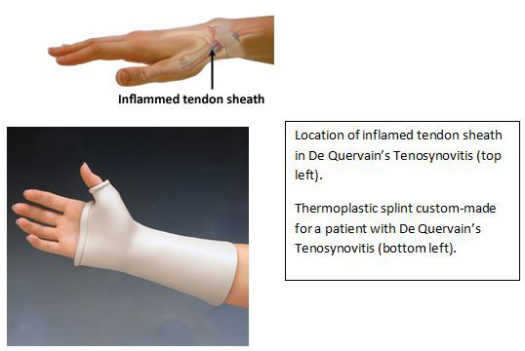
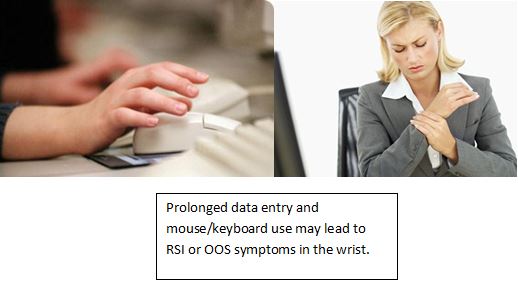
Repetitive Strain Injury (RSI) or Occupational Overuse Syndrome (OOS)
Repetitive hand activity may cause generalised, diffuse pain around the wrist and fingers.
This is usually caused by fatigue of the muscles around the thumb and hand, or repeated minor strains related mostly to work or some sports.
Work involving lifting, gripping, packing, picking orders from warehouse storage or conveyor belts, prolonged typing, and data entry, may be associated with wrist and hand RSI/OOS.
Physiotherapy may help manage this condition.
